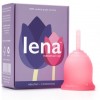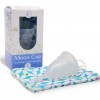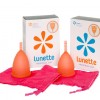The Benefits and Drawbacks of Soft vs. Hard Decisions – The pros and cons.

When making decisions in life, it is important to determine which option is the correct option. In any given situation, soft decisions and hard decisions are two distinct types of decisions that can be made. Soft choices are those that call for more flexibility and allow more time to make a decision. Hard decisions are those that require more structure and a specific decision. Almost every choice has its own benefits and drawbacks.
Soft decisions, on the other hand, have the primary advantage of allowing for more time to consider the choices presented. Soft choices allow for more flexibility in making a decision, allowing for more time to think, study, and consider different choices. This means that more data can be obtained and assessed before a decision is made. If someone is deciding whether or not to attend college, they should first consider the costs and benefits of the various colleges before making a decision.

Soft decisions have the primary disadvantage of being difficult to follow. Soft decisions, on the other hand, often necessitate more investigation and investigation of alternative options. Procrastination and difficulties in making a decision can result in procrastination. In addition, if a decision is delayed too long, the situation may change and the decision may no longer be relevant or useful.

Hard decisions have the primary advantage of being quick and decisive. Hard decisions are often made on predetermined criteria or a set of guidelines, so the decision can be made quickly. This allows for quick intervention and can be advantageous in situations where time is of the essence. For example, if someone is considering whether or not to accept a job offer, a difficult decision can be made quickly and without much effort or consideration of the benefits and drawbacks.
Hard decisions have the primary disadvantage of being inflexible. Hard decisions are often made based on predetermined criteria, so there is no room for improvement or deviation from the intended purpose. In addition, difficult decisions can be impossible to reverse or change once they have been made. This can lead to poor decision making and long-term consequences.
In the end, soft decisions and hard decisions both have their advantages and drawbacks. Soft choices provide more flexibility and allow for more time to consider different options, but they can be difficult to make and are susceptible to procrastination. Hard decisions are quick and decisive, but they can be immobile and difficult to reverse. The type of decision that is most appropriate for a given situation is determined by the particular circumstances and the amount of time available to make a decision.












There are no comments yet, add one below.